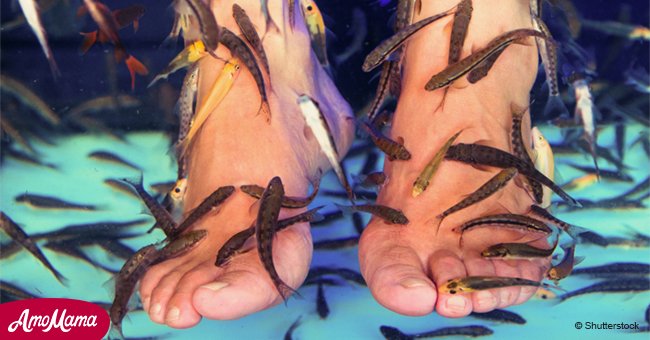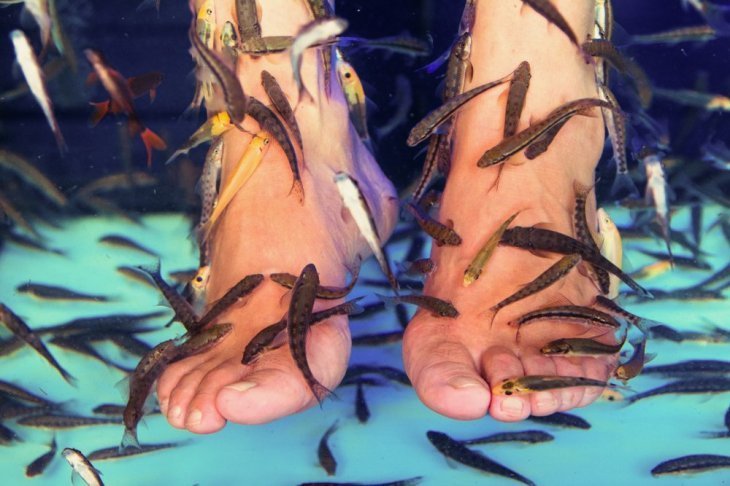
'Harmless' fish pedicure caused woman's toenails to fall off
The treatment has been popular for the past decade already, but more and more evidence has come to light to show that there are serious risks associated with it.
Fish pedicures are a treatment in which the feet are submerged in a tub of water at the temperature of between 25 and 30 degrees, a tub that also has a bunch of small fish called Gurru rufa.
These fish originate from waters in the Persian Gulf all the way to the eastern Mediterranean. They naturally stick to rock by suction while they feed on plankton.
They are omnivores, so when they are provided with tubs of water with no food source but human feet, they will feed on the skin cells, although according to Jama Network, they won't feed on normal skin cells.

Source: Shutterstock
As a result, fish pedicures are particularly popular with people suffering from psoriasis, as the fish will eat away the infected skin. One study indicated that people with the condition who underwent treament for 3 weeks experienced a 72% reduction.
Unfortunately, despite the popularity of this treatment, there are significant risks to fish pedicures. Just weeks after the treatment, one woman noticed that her toenails were starting to fall out.
This condition is called onychomadesis, and starts with the nail pulling away from the nail bed. More often than not, it results in nails falling out. The woman in question lost the nails on her first, second, and third toes.
Onychomadesis is not a condition solely associated with fish pedicures, and usually presents along with medical illnesses, infections, systemic disease, autoimmune disease, medications, hereditary conditions, and other idiopathic conditions.
The main concern with fish pedicures is that the water cannot be properly sanitized between clients, and nor can the fish. As a result, clients run the risk that the fish with transmit infections between clients.
There have been cases of sttrapphylococcus aureus infection transmission as a result of fish pedicures, as well as a case of mycobacterium marinum infection.
Consequently, the treatment has been banned in a number of states in the US, and in parts of Europe.